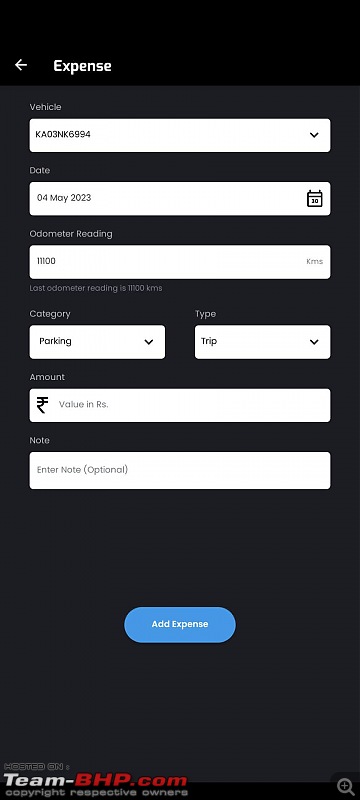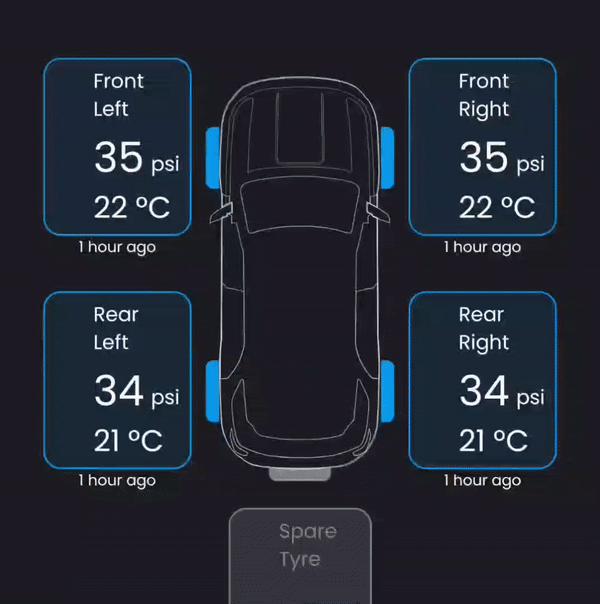After a gap of several months, me and my wife finally managed to find time for a small vacation. We decided to visit Gokarna for some quiet and relaxing beach time. Of course we were going to drive there from our home in Bangalore as both of us love long drives.
We decided not to halt in between and do the complete drive same day. I have driven down from Goa before but had taken a night halt at Davanagere. This was going to be the longest single day drive for me. Our car was in top shape, just serviced 3 weeks prior. But since our 9 months old daughter was also going to be on this trip with us I did not want to take any chances and wanted to be thoroughly prepared. Everything was ready but my ordeal with tyre problems was worrying me a little. (Post about it
here (Warranty for OEM Tyres vs tyres purchased from the aftermarket))
A TPMS was always in my wishlist and I decided to get it installed before the trip. A TPMS can give early warning in case of puncture allowing you sufficient time to find a remedy. Some TPMS can also give a warning for high pressure resulting from high temperature. So a week prior to the trip I got it installed in my car. Following are some details about its installation and my experience during the trip and since.
There are several aftermarket TPMS available online and offline. Some well rated ones on Amazon can be bought for as less as Rs 2500 for a set of four. However I decided to go with Treel brand ones, which cost around Rs 5k for a set of four. Treel is a sub brand of JK Tyres and I decided to put my trust on them over the cheaper Chinese brands (I am not sure if Treel is manufactured in India).
There are two types of TPMS available - internally fitted and externally fitted. The external ones are totally DIY. You just have to screw it on the valve. The downside is that they have to be removed every time you need to inflate the tyre (though there are some splitters available which splits the valve in two - one for the TPMS and one for inflating). Also, the external ones can be easily stolen.
The internal ones are fitted inside the tyre. It replaces the valve with its own and sits snugly stuck to the inside of the rim. The only problem with these is that they have non-replaceable battery. Treel offers 5 years warranty on them including on the batteries. You need to remove the tyres to install the internal TPMS, so you will have to visit a tyre shop.
I inquired a JK tyre reseller nearby and they had the internal TPMS available at the same price as on Amazon. Also, they offered installation, wheel alignment and balancing for free. It was a no-brainer to get it offline from them.
The installation was simple and quick. Took hardly 30mins for installation followed by few minutes for balancing and alignment.
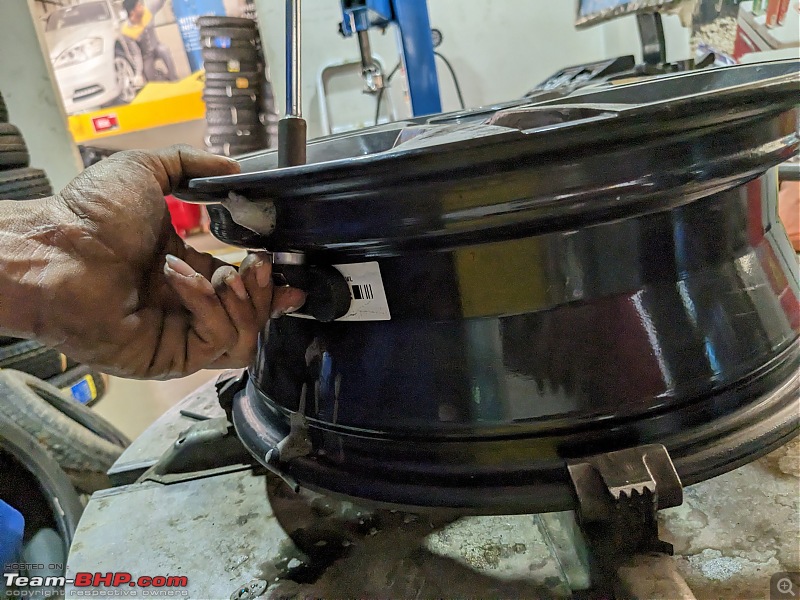
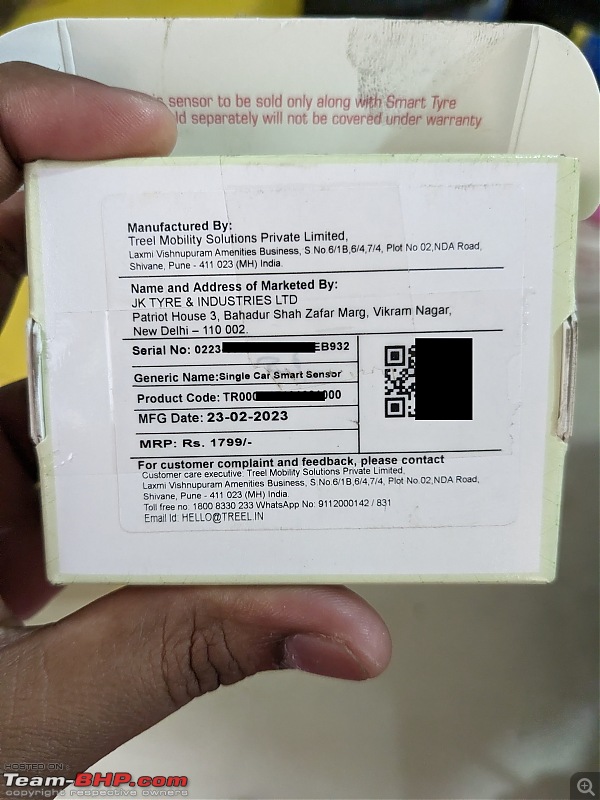
Following the installation you need to install Treel's app on your phone and scan the QR code for each TPMS sensor labelling them as Front-Left, Front-Right, Rear-Left and Rear-Right, depending on where each sensor is installed. When you rotate the wheels you can change the label of each sensor to match the correct position of the tyre. Alternatively, you can buy a separate screen that sits on your dashboard and shows the sensor readings. I decided to use the app as it can also show the readings on Android Auto. The readings are transmitted over Bluetooth (BLE) and it works if your phone is in 100 meter range.
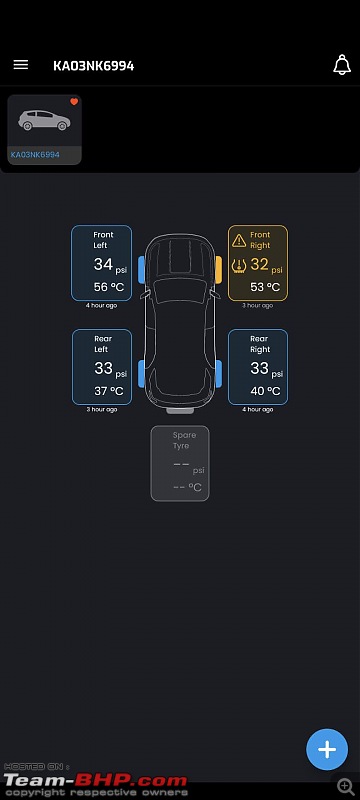
The default screen showing the pressure and temperature of each tyre.
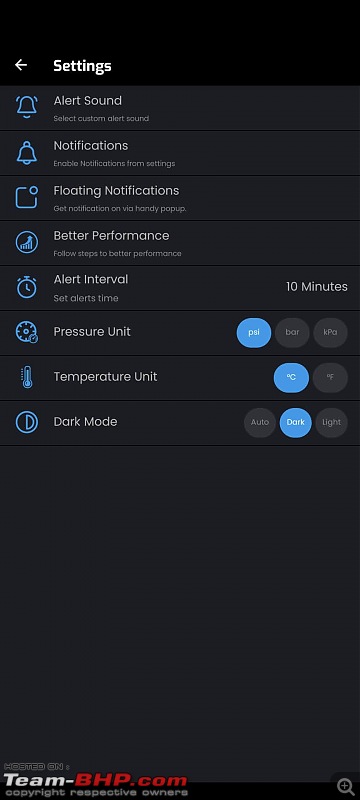
The settings screen where you can choose the unit and set alert sound.
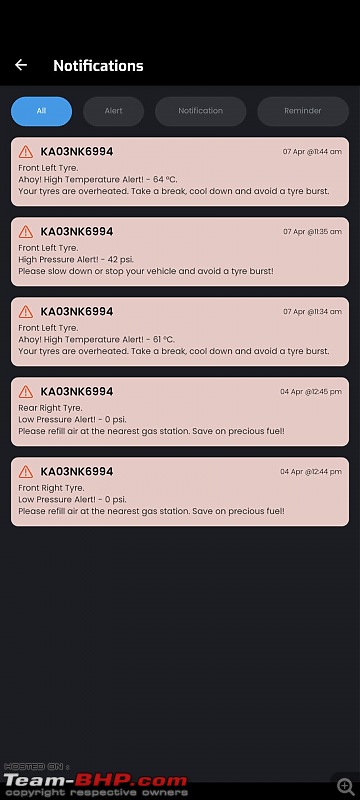
Alert history is also preserved.
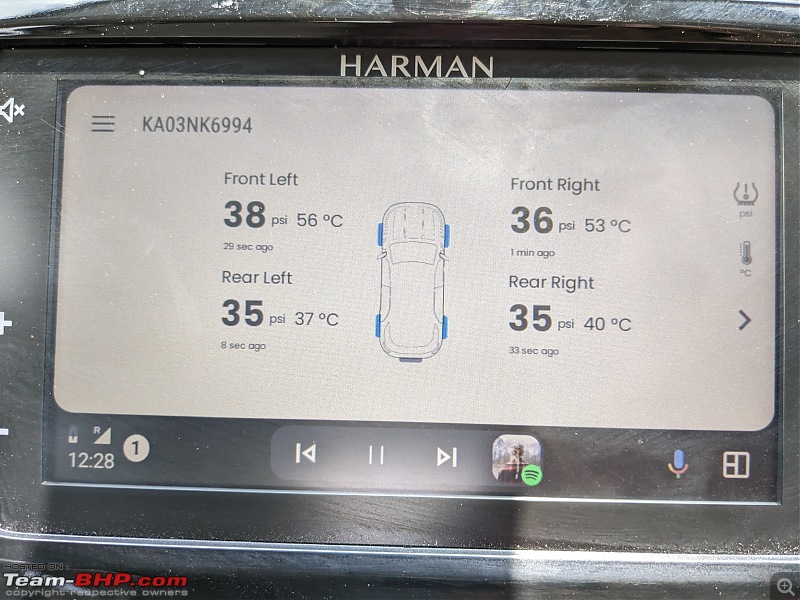
You can see the current readings on the Android Auto too.
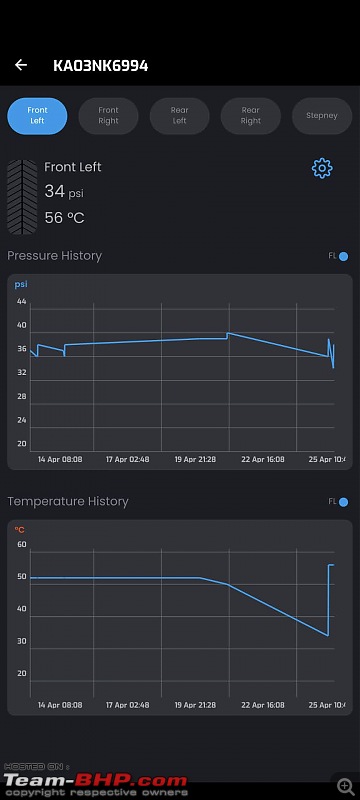
In the app you can select a tyre to see the readings history.
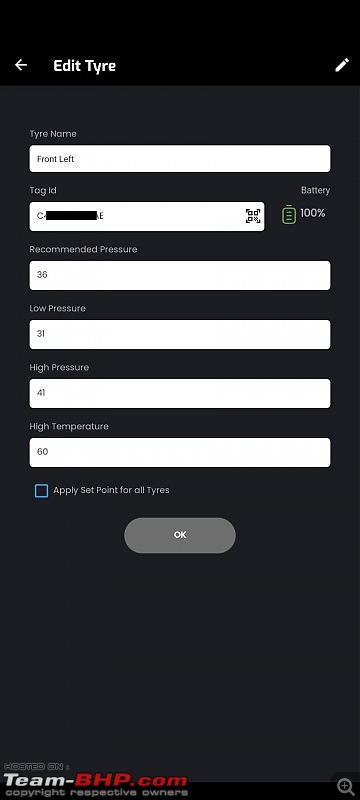
You can also set the low and high thresholds for each tyre. The battery charge is also shown.
After the installation I had a week's time before the trip. I checked the pressure daily, using the app and Michelin 4203 Digital Tyre Pressure guage. The Treel sensor's readings are within +/- 0.5 PSI range of what I can see in the Michelin guage.
The pressure did not drop from 36PSI over the week. I was a bit concerned because I had read some reviews about air leakage from the sensor valve.
On the day of the trip the cold tyre pressure was 36 PSI in the morning. I did not change the default pressure and temperature thresholds in the app. Our drive from Bangalore till Hubbali was uneventful. The road from Hubbali is an undivided single lane with lots of turns on the ghat section.
In this section, I got several warning notifications of high tyre temperature. The front tyres were heating and I received the first warning at 61 degree C. The front left tyre was heating a bit more than the front right. The pressure had also jumped to 42 PSI. The rear tyres were around 50 degree C. I was not sure if 60 degrees was a matter of concern but still, we took a break of 15 mins and parked in the shade to let the temperature drop. Later I searched about the temperature specifications for my tyres but unfortunately could not find very reliable information. Some articles suggest that temperatures upto 90 degrees C should be safe in modern tyres. Will do more reading to learn about this.
The warning notification is shown in the Android auto accompanied by a loud alert sound.
We returned at night and there was a clear difference in tyre pressure and temperature even though we took just two very short breaks and drove almost continuously. We did not get any alert.
I have been driving in the city since the Gokarna trip and I am keeping an eye on the readings. I have noticed following even on short drives (5-10kms)
- The front tyres heat up more than the rear tyres. The pressure also increases more in the front tyres. My car is front-wheel driven.
- The temperature in front tyres goes up to mid 50 degrees. The pressure goes to around 40 PSI. The rear pressure hardly increases though the temperature increase little bit.
- For some reason my front left tyre heats up the more with highest pressure increase too.
That's my short review of my experience of installing and using Treel TPMS for about two months. I will post updates if there are any new noteworthy observations. Thanks for reading.
 (61)
Thanks
(61)
Thanks

 (2)
Thanks
(2)
Thanks
 (2)
Thanks
(2)
Thanks
 (3)
Thanks
(3)
Thanks
 (12)
Thanks
(12)
Thanks
 (3)
Thanks
(3)
Thanks
 (1)
Thanks
(1)
Thanks
 (3)
Thanks
(3)
Thanks
 (11)
Thanks
(11)
Thanks
 (6)
Thanks
(6)
Thanks
 (1)
Thanks
(1)
Thanks
 (2)
Thanks
(2)
Thanks
 (1)
Thanks
(1)
Thanks
 (1)
Thanks
(1)
Thanks














